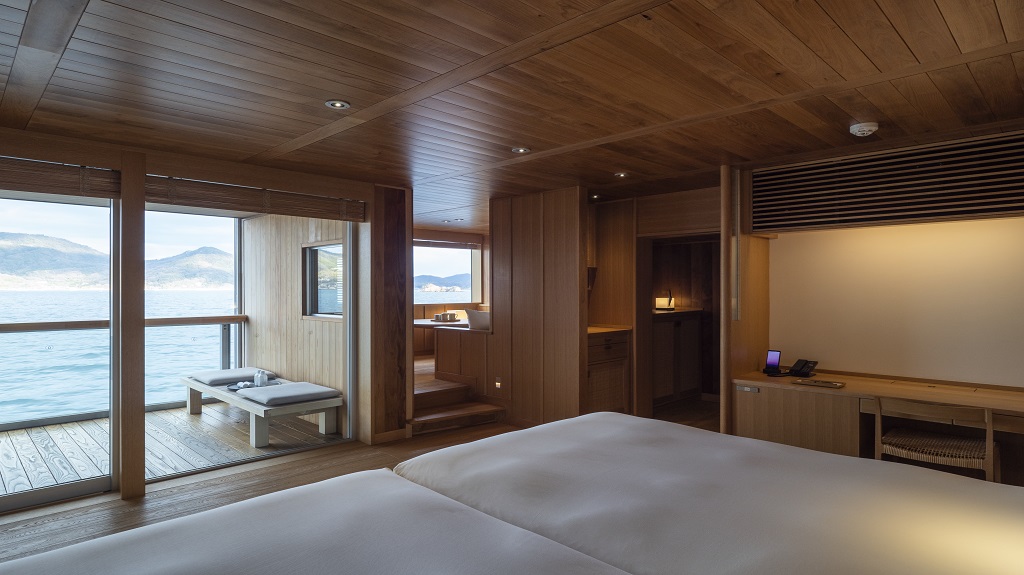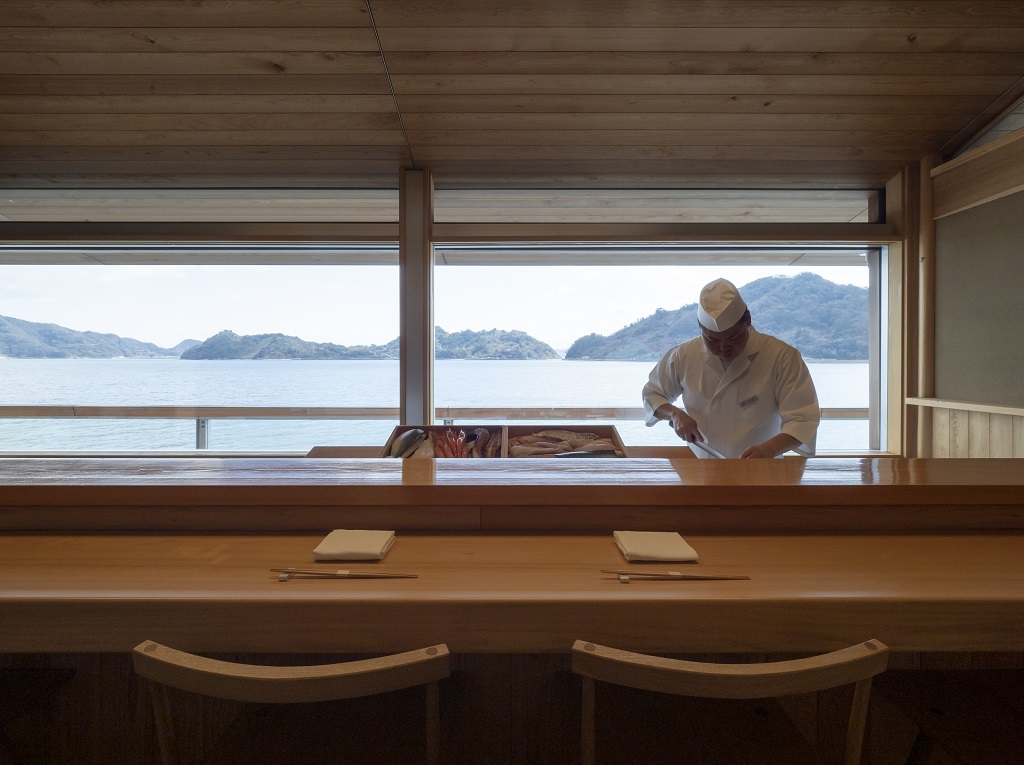Designed by architect Yasushi Horibe, we feel the guntû is best described as a cross between a traditional Japanese ryokan and a luxury yacht. Launched in 2017, the 19-room, 266-foot-long floating ryokan/hotel sails along the Seto Inland Sea.

Origin
Owned by the over 100-year-old Tsuneishi Shipbuilding Co., Ltd., the three-decker boat, is named after little blue crabs that sometimes end up in fishing nets. Affectionally called guntû, the crabs are flavorful when added to soups and stews.


Design
The interior of guntû is tranquil and soothing, the shoji doors offer an inviting atmosphere. All 19 wood-paneled cabins are spacious and minimalist, some featuring their own onsen and private terraces overlooking the water. Guntû features a wide range of onboard facilities including an observation deck, a lounge, gym, treatment room, communal bath, and sauna.


Onboard Dining
A highlight of guntû is the dining. Chef Kenzo Sato from Tokyo’s Shigeyoshi restaurant considers the weather, guest preferences, and mood when creating the menu. Local and seasonal ingredients are used with a focus on their flavor, simplicity, and beauty. Dining areas are comprised of a tearoom, a cocktail bar/café, a sushi bar, and a char-grill counter.
We love guntû’s dining motto of “what you want, as much as you want”. This rings true on board as guests can pick from a selection of fresh fish and meat, then have it cooked to their wishes. There is also a Western dish menu known as yoshoku with foods like seafood croquettes and stew available in addition to Japanese cuisine. Perhaps our favorite aspect of the dining experience here is the sushi bar serving fresh local fish on the third deck of the boat which faces the moving scenery outside.

Excursions
Aside from the onboard experience, there are various excursion options including morning walks along beautiful shorelines, through port towns, and learning from local fishermen. Guntû offers three categories of voyage, east, west, and central. With eight total routes, each has different stopovers and activities. From learning about the history of the Murakami kaizoku pirates, the culinary culture of the Shimanami Islands, exploring the Seto Inland Sea’s tidal currents and scenery to exploring eastern Setouchi and Setouchi art island hopping guntû provides a unique experience to explore what Japan’s coasts have to offer.